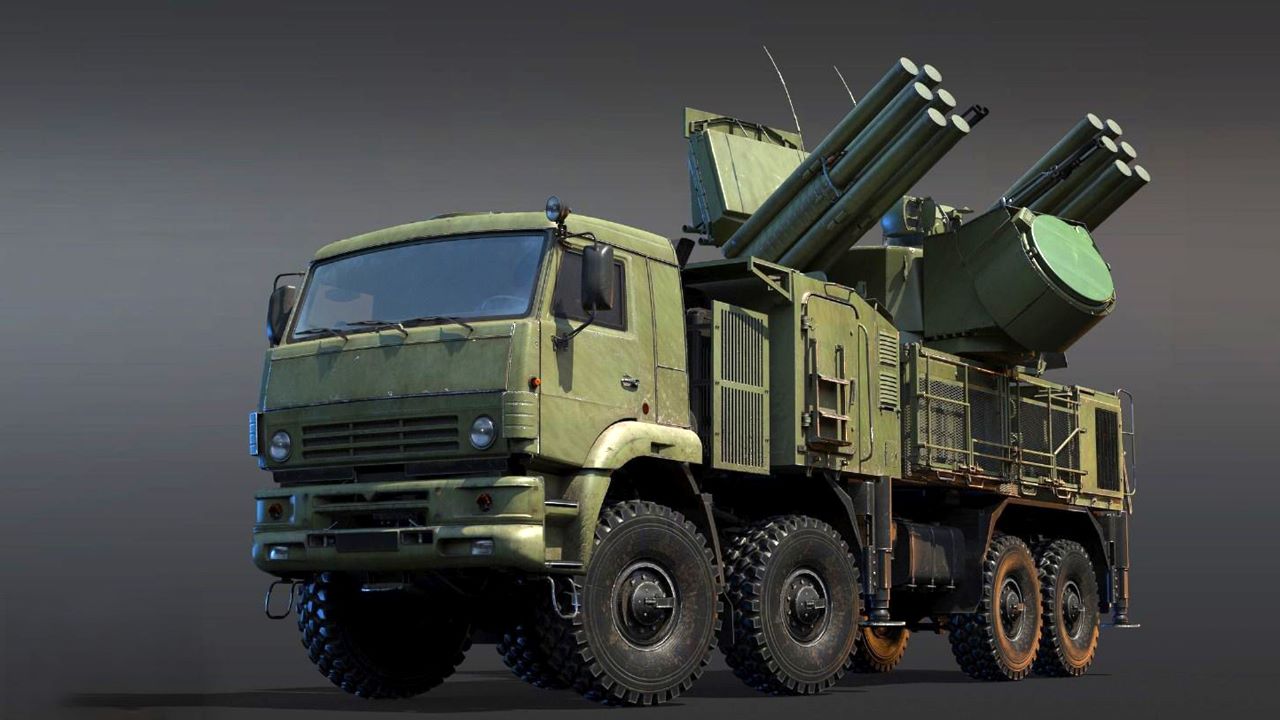India will co-develop the Pantsir S-1 short-range air defense system, which has so far kept Russian patriarch Vladimir Putin’s residence on Valdai Lake safe from Ukrainian drones. The two countries have inked an agreement to co-develop the air defense system, which NATO reports as SA-22 Greyhounds.
India has integrated its recently acquired S-400 (NATO reporting name: SA-21 Growler) long-range air defense system and is still awaiting two units.
While the deal for the long-range surface-to-air missile created consternation in Western countries, New Delhi did manage to avoid sanctions through its diplomatic dexterity.
The Ukraine war has slowed arms trade between the two countries. Now, they are collaborating to develop new iterations of the Pantsir-S1 close-in air defense system.
This system is designed to defend ground installations against various aerial threats, such as fixed-wing aircraft and helicopters, ballistic and cruise missiles, precision-guided munitions, and unmanned air vehicles. It can also engage light-armored ground targets.
Russia ‘Steps Up’ Long-Range Precision Attacks On Ukrainian Military Using Grom-E1 Missiles
Bharat Dynamics Limited announced on X the signing of a Memorandum of Understanding (MoU) with Rosoboronexport. “Bharat Dynamics Limited and Rosoboronexport (ROE), Russia entered into an MoU for cooperation on Pantsir variants, air defense missile-gun systems. The MoU was signed by Commodore A.Madhavarao,(Retd), CMD, BDL, and Mr. Kovalenko German, DDG, Naval Department, ROE on the side-lines of 5th IRIGC Subgroup at Goa,” the post said.
The India-Russia Intergovernmental Commission (IRIGC) has two divisions: the Trade, Economic, Scientific, Technological and Cultural Cooperation (IRIGC-TEC), co-chaired by the EAM from India and First Deputy Prime Minister (DPM) Denis Manturov from Russia, and the Military & Military-Technical Cooperation (IRIGC-M&MTC), headed by the Defence Ministers of the two countries.

Along with the S-400, the Pantsir-SM plays a vital role in India’s layered air defense network. Its capabilities are particularly suited for protecting critical infrastructure, such as military bases and command centers, from diverse aerial threats.
Ukraine War ‘Setbacks’ Pushing Russia Towards Nuclear Options; Pentagon Intel Warns Of Nuke War
Russia uses Pantsir S-1 to shield its military-industrial facilities. The system, priced at $15 million, is known for its ability to intercept complex, low-radar-signature targets and high-precision projectiles from multiple launch rocket systems. Russia has accelerated the production of these systems to meet increasing demand, and Rostec continues to develop new versions of the system.
Pantsir – Defending Critical Infrastructure From Airborne Threats
The Pantsir is a mobile air defense system mounted on a truck chassis, typically a Ural-53234 8×8, Kamaz-6560 8×8, or MAN SX45, which provides it with great mobility across various terrains. The system has twelve 57E6 or 57E6-E surface-to-air missile launchers and two dual 30mm 2A38M automatic cannons. These weapons allow the system to respond effectively to threats at varying distances.
The Pantsir-S missile has a range of 1 to 12 km, while the 30mm automatic cannons can engage targets between 0.2 and 4,000 meters. These characteristics make it a versatile system capable of neutralizing fast-moving aerial targets, such as drones, helicopters, and cruise missiles, at different distances.
Many countries worldwide have deployed the Pantsir-S1, including Algeria, Iran, Iraq, Russia, and the United Arab Emirates. It has sophisticated accessories, such as radio controls with direction-finding or infrared systems and autonomous acquisition and tracking radars.
These detection systems allow the Pantsir-S to operate independently, without external support, to detect and engage aerial targets.
The Pantsir-S1 system combat vehicle carries 12 missiles and 1404 rounds, while the transport-loading vehicle holds 24 missiles and 2808 rounds. The system can engage targets moving at speeds up to 1000 m/s, with the missiles traveling at speeds up to 1300 m/s.
Each combat vehicle can simultaneously engage up to four targets. The system’s fire rate is 12-16 targets per minute and its hit probability is up to 0.9. Its reaction time is 4-6 seconds.
Shielding Putin Against Ukrainian Aerial Threats
Since the beginning of the Ukraine war, Russia has been fortifying its air defense systems against Kyiv’s drones. The Ukrainian hacker group Cyber Resistance leaked the location of Russian Pantsir air defense systems.
Apart from protecting the state buildings, including the Ministry of Defense Offices, the roof-mounted Pantsir S-1 has been deployed on towers 3.7 kilometers away from Vladimir Putin’s residence on Valdai Lake, according to updated Google Earth imagery from May 6, 2024.
The system is efficient and can operate under harsh environmental conditions, withstanding wind speeds up to 30 m/s, temperatures ranging from -40 to +60 °C, and relative humidity up to 98% at 35 °C.
It remains operational at altitudes up to 3000 meters, in rain intensities up to 5 mm/h, and in dust concentrations up to 2.5 g/m³. This makes it well suited for India, which has an operational area extending from the Himalayan mountains to the deserts of Rajasthan.
The US has been so intrigued by the air defense system that in June 2020, it smuggled a Pantsir-S1 out of Libya after it was captured from forces aligned with Russia-backed Khalifa Haftar. The US forces reportedly transferred the Pantsir-S1 from Zuwarah International Airport to Ramstein Air Base in Germany.




